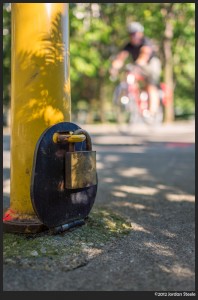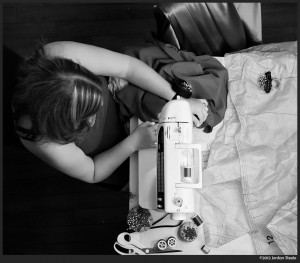Image Quality: Detail, Dynamic Range and Color

If there is one thing the NEX-7 has going for it, it’s image quality, especially low ISO image quality. The APS-C sensor in the NEX-7 is among the best APS-C sensors out there, and packs 24 megapixels into its circuitry. The NEX-7 provides very detailed images with extremely wide dynamic range. Others have tested it at over 13 stops of usable dynamic range in RAW at base ISO, and my shooting bears that out. Basically, you can shoot in most any condition, and you’ll be able to retain detail in the shadows and highlights.
The NEX-7’s color response is pretty good. While I found JPEG images to be flat, the RAW files are very malleable, and the base color balance is accurate and pleasing. While by default the images aren’t particularly saturated, especially in the greens, I was able to bring out excellent color in Lightroom by boosting the saturation a bit.
I mentioned the detail, and the NEX-7 does indeed provide detailed images. I found that while the JPEG color quality was a little flat, Sony has tuned JPEGs to retain a very high level of detail. In RAW, you can get even more detail out of the images, though it does seem the NEX-7 has a moderately strong anti-aliasing filter, so the resolution advantage over 16 megapixel cameras isn’t quite as large as I might have expected.
Image Quality – Noise

While the NEX-7 contains a good sized APS-C sensor, there are a lot of pixels crammed into the sensor, so noise has the potential to be worse at the pixel level than the lower megapixel NEX cameras. Indeed, tests seem to show that a camera like the NEX-5N retains a pixel level advantage over the NEX-7 in the noise department. That said, the higher resolution will offset some of that higher per-pixel noise, and indeed, the NEX-7 has very fine high ISO capability.
At low ISO, the NEX-7 does a very nice job controlling noise. While there is still a very slight amount of noise in clear blue skies, it’s very well controlled, and better controlled than any of the Micro 4/3 cameras. At high ISO, noise remains well controlled. Images are extremely usable up through ISO 1600 for most any use, and even ISO 3200 and 6400 are plenty good enough for 8×10″ or 11×14″ prints. At ISO 12,800 and 16,000, a magenta cast creeps into the images, and noise becomes objectionable, but could still be usable in a pinch or for small prints.






Leave a Reply